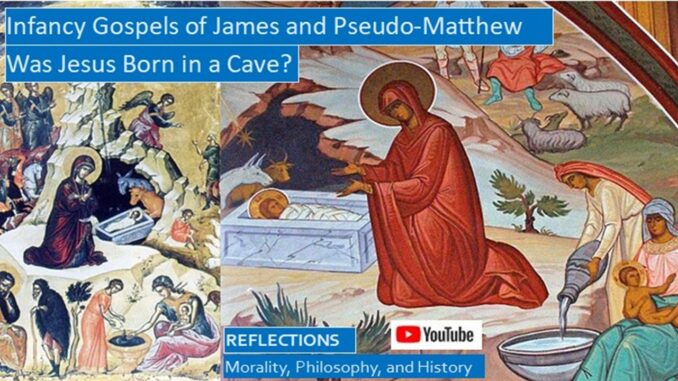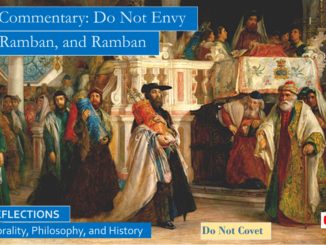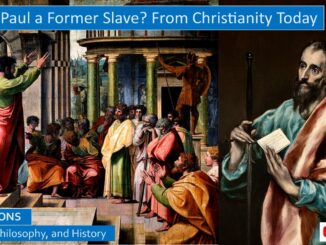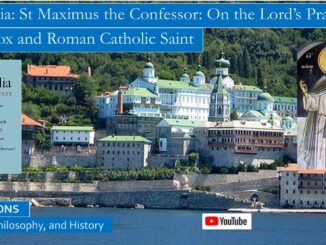
Did the Virgin Mary give birth to Jesus in a stable? Or in a cave?
Did a Hebrew midwife assist the Virgin Mary?
Was Joseph distraught when he discovered that Mary was pregnant?
Did Anna, mother of Mary, dedicate her to serve in the Temple as a young girl?
WHY MANY NATIVITY ICONS SHOW MARY AND BABY JESUS IN A CAVE
One oddity is that most Orthodox icons, and some medieval Catholic paintings of the Nativity, show Mary and baby Jesus sheltering in a cave rather than a stable, and sometimes showing a midwife assisting with the birthing process.
The source of this alternative Nativity story is the Infancy Gospel of James, or the Protoevangelium of James, dating from the second century AD, early in the history of the Christian Church. Although this gospel was not considered scriptural by early Christians, since an early apostle did not write it, and it was not commonly read during the early church liturgies, it was nevertheless treasured by many in the early Church.
Should the Books of the Apocrypha Be Included In the Bible?
http://www.seekingvirtueandwisdom.com/should-the-books-of-the-apocrypha-be-included-in-the-bible/
https://youtu.be/zt_G1YRLB0U
The Infancy Gospel of James was well known by the early Church Fathers, especially Origen, and possibly Clement of Alexandria. Although this infancy narrative was condemned by Pope Innocent I in 405 and was considered apocryphal by the Gelasian Decree around the year 500, it was one source of the early church tradition of the perpetual virginity of the Virgin Mary, Theotokos, Mother of God. It was especially treasured by the faithful in both the ancient and medieval worlds. St Jerome even speculated that Joseph was also perpetually virgin, and that the Hebrew word translated as his sons were actually his cousins.[1]
Should we reject the Infancy Gospel of James as apocryphal? Would it be fair to label it as heretical? Although this infancy gospel contains many fanciful stories, there are no obviously heretical teachings, nor are the actions by anyone in the Holy Family morally or doctrinally objectionable. Rather, they are similar to the many Jewish midrash Talmudic stories, many of which are similarly fantastic, but are instead cherished for their moral teachings. Indeed, they wouldn’t be midrash if they weren’t improbable.
INFANCY GOSPEL OF JAMES
Who were the parents of Mary? In Church tradition, Joachim and Anna. In the Infancy Gospel of James, Joachim, a wealthy man, brought twofold offerings to the Temple, but they were refused since he had no offspring. Which doesn’t make sense historically, but that is what the story tells us.
So, Joachim pitched his tent in the desert, fasting from food and water for forty days, saying to himself, “Prayer will be my food and drink.” Meanwhile Anna, his wife, was home grieving because she thinks she is both a widow and barren, and even her maid chides her for her barrenness.
Then the Gospel of James says, “And behold, an angel of the Lord appeared, saying, ‘Anna, Anna, the Lord God heard your prayer, and you will conceive and give birth, and your offspring shall be spoken of in the whole inhabited world.’”
“Anna said, ‘As the Lord my god lives, if I give birth, whether male or female, I will present it as a gift to the Lord my God, and she shall be a ministering servant to God all the days of her life.’”
This recalls another childless couple in the Old Testament, Elkanah and Hannah. She prays in the Temple for a child, promising to dedicate him to the Lord. Answering her prayer, the Lord opened her womb, and she gave birth to Samuel, the prophet who would anoint David as King of Judah and Israel. When she returned her young Samuel to the Temple, Hannah said: “I have lent him to the Lord; as long as he lives, he is lent to the Lord.”[2]
Then Joachim returned with his flocks, but immediately the angels told him that his wife was pregnant, and he made a sacrifice to the Lord in Thanksgiving. There is no mention of the Holy Spirit conceiving the baby in Hannah’s womb, and tradition does not claim this, so we must suppose that instead the Holy Spirit kept Joachim’s tadpoles alive retroactively in Hannah’s womb for several months.
ANNA DEDICATES MARY TO SERVE IN THE TEMPLE
Anna dedicated Mary to the temple when she was three years old. “The priest received her, and kissing her he blessed her and said, ‘The Lord God has magnified your name in all generations; in you, at the end of days, will the Lord God manifest his deliverance to the children of Israel.’”
The Gospel of James celebrates that “Mary was in the Temple of the Lord like a dove being fed, and she received food from the hand of an angel.” Many years passed, but when Mary turned twelve, the priests became concerned, lest her menstrual issuances of blood would violate the purity laws of the Temple. They called together all the widowers of the kingdom, handing them each a rod. This is also reminiscent of when, in Egypt, the leaders of each tribe were each provided a rod, but only Aaron’s rod sprouted, showing that only he and members of the Tribe of Levi should be priests.[3]
The Gospel of James says: “Joseph received the last rod, and behold, a dove came forth from the rod and settled on Joseph’s hand. Then the priest said, ‘Joseph, you have been designated by lot to receive the virgin of the Lord as your ward.’”
Are these two references to birds in the Temple reminiscent of Psalm 84?
Even the sparrow finds a home,
and the swallow a nest for herself,
where she may lay her young,
at thy altars, O Lord of hosts,
my King and my God.[4]
But “Joseph refused, saying, ‘I have sons, and I am an old man, but she is a young maiden: lest I be a laughingstock to the children of Israel.’” The implication is that old men can no longer desire young maidens, an opinion seconded by Cephalus in the opening chapter of Plato’s Republic.[5]
But the priest tells him he has no choice, that the Lord has commanded him to be Mary’s guardian, referencing another Old Testament story. “The priest said, ‘Joseph, fear the Lord! Remember what God did to Dathan and Abiram and Korah, how the earth was split in two and they were all swallowed up on account of their disputing” who was in charge, them or Moses.[6] “And now, Joseph, beware lest these things be also in your house.’”
The following passage first expresses the traditional teaching in the Catholic and Orthodox Churches that Mary was a perpetual virgin: “Joseph, frightened, received her as his ward; and Joseph said to her, ‘Mary, I have received you from the Temple of the Lord. Now I am leaving you behind in my house, and I am going away to build houses; later I will return to you. The Lord will guard you.’”
According to this Gospel, Mary ate her meals alone in the Temple, being fed by angels, and perhaps the same happens now that Joseph is her guardian, since he avoids going home, maybe so the reader won’t suspect that anything happened between him and Mary. The Gospel of James also explicitly says that the sons of Joseph are from a prior marriage
All Christian mainline traditions teach, and the Gospel of Matthew exhorts, that Mary was a virgin when she gave birth to Jesus, but most Protestants deny that she was perpetually a virgin. Originally, Luther wanted to regard married couples as equal to or superior to monastics, and disdained monasticism, releasing many monks and nuns from their vows, many voluntarily, some involuntarily. In addition to the Infancy Gospel of James, the Second Church Council of Constantinople in 553 AD gave her the title of Aeiparthenos, or Perpetual Virgin.[7]
The doctrine of the Immaculate Conception, which states that Mary was born without the stain of original sin, is a Catholic doctrine that is not accepted by the Orthodox Churches, and cannot be traced back to the Gospel of James. Although it was debated by medieval theologians, drawing on traditions of the early Church Fathers, it was first declared to be dogma by the Catholic Pope Pius IX in 1854.[8]
The Gospel of James repeats the story of the Annunciation, when the angel appears to Mary, telling her that she has been chosen to be the Theotokos, Mother of God, and Virgin Mary, who will conceive and bear a son by the power of the Holy Spirit, and that her Son will be the Savior of the world. When Joseph returns from building houses, when Mary is six months pregnant, he is most distraught.
The Infancy Gospel reads, “Joseph struck his face and threw himself to the ground, weeping bitterly.” He cried out to God: “I received her a virgin from the Temple of the Lord God, and I did not guard her. Who is he who has deceived me? Who did this evil thing in my house and defiled her?” As in Matthew, an angel speaks to Joseph in a dream, telling him that the baby was conceived by the Holy Spirit.
MARY GIVES BIRTH TO JESUS IN A CAVE
Like in Matthew, our couple travels to Bethlehem to register for Caesar’s census, while Mary is heavy with child. The Infancy Gospel of James says: “They were in the midst of the journey, and Mary said to him, ‘Joseph, take me down from the donkey, for that which is in me is ready to be born.’ He took her down from the donkey and said to her, ‘Where shall I take you to shelter your shame? For the place is desolate.’”
“Joseph found there a cave, and he brought her in and placed his sons beside her. Then he went out to seek a Hebrew midwife in the country of Bethlehem.” “Finding a midwife, he brought her. They came down from the mountain, and Joseph said to the midwife, ‘Mary was betrothed to me, but she, having been brought up in the Temple of the Lord, has conceived by the Holy Spirit.’ And she went with him.”
“They stood in the cave, overshadowed by a dark cloud. The midwife said, ‘My soul is magnified today, for my eyes have seen a mystery: a Savior has been born to Israel!’ And immediately the cloud withdrew from the cave, and a great light appeared in the cave so that their eyes could not bear it. After a while the light withdrew, until the baby appeared. It came and took the breast of its mother Mary; and the midwife credit out, ‘How great is the day, for I have seen this new wonder.’”
When this Gospel was written, the early Christian Church was battling the Docetist heresy, which claimed that Jesus was not both God and man, but was entirely divine, who later only appeared to suffer on the cross. To counter the docetic argument, the Gospel of James offers a proof of Mary’s virginity: “The midwife went in and placed Mary in position, and Salome examined her virginal nature; and Salome cried aloud that she had tempted the living God, ‘and behold, my hand falls away from me in fire.’ Then she prayed to the Lord.”
“Behold, an angel of the Lord appeared, saying to Salome, ‘Your prayer has been heard before the Lord God. Come near and take up the child, and this will save you.’ She did so; and Salome was healed as she worshipped.”
How old was Mary when she gave birth to Jesus? The prevailing tradition is she was fourteen, which was a common age to become a mother in the ancient world. The various manuscripts of the Gospel of James range from twelve to seventeen years old, but the older manuscripts say sixteen.
The Infancy Gospel of James includes the stories from the synoptic Gospels of the Magi visiting Jesus, who told Herod they were searching for the future king of the Jews. Mary and Joseph fled to Egypt with their baby Jesus, while Herod murdered many innocent Jewish male infants. The Gospel of James adds an account where Elizabeth, mother of John the Baptist, was hidden by the mountains. When his father, the priest Zechariah, could not tell Herod where his son was, Herod murdered him, fearing that his son was the future king of the Jews. The Synoptics and Gospel of James also recount how Mary visited Elizabeth during their pregnancies.[9]
INFANCY GOSPEL OF PSEUDO-MATTHEW
Written many centuries later, the Infancy Gospel of Pseudo-Matthew expands on the Infancy Gospel of James. In the first verses, this gospel wants to reassure the reader beyond a shadow of doubt that Mary was a virgin when she miraculously conceived Jesus. Did this elaboration intend to suggest that Mary was running an informal convent while Joseph was away building houses?
The Infancy Gospel of Pseudo-Matthew states that when “Joseph returned home he found Mary pregnant. Totally gripped by anguish, he trembled and cried out: ‘Lord God, accept my spirit, because it is better for me to die than to live.’”
“The virgins with Mary said to him: ‘What are you saying, Lord Joseph? We know ourselves that no man has touched her; we know ourselves that, in her, innocence and virginity were preserved unspoiled. For she has been guarded by God; she always persists with us in prayer. Daily an angel of the Lord speaks with her; daily she accepts food from the hand of an angel. How is it possible that there should be any sin in her? For if you want us to voice our suspicion to you, this pregnancy was caused by none other than God’s angel.’”
This gospel confirms what we earlier guessed, that Mary eats all her meals in the company of angels, even after she left the Temple. More importantly, it clarifies the Catholic and Orthodox attitude that, of course, Mother May was eternally virginal, for: “How is it possible that there should be any sin in her?” How can Mary, Theotokos, Mother of God, be stained by carnal love? Why wouldn’t she experience only Divine Love? This distinction between divine love and carnal love is explored by both the Early Church and by Plato.
Summary of Platonic Dialogues on Love and Friendship, With Commentary by Copleston and Anders Nygren
https://seekingvirtueandwisdom.com/summary-of-platonic-dialogues-on-love-and-friendship/
https://youtu.be/cjXRXQc6Ff4
Anders Nygren, On Christian Agape-Love and Eros-Love in Gospels and Pauline Epistles
https://seekingvirtueandwisdom.com/anders-nygren-on-christian-agape-love-and-eros-love-in-gospels-and-pauline-epistles/
https://youtu.be/KniBalQMemM
Xenophon and Plato, Socratic Dialogue, Symposium, Divine and Noble Love, Part 2
https://seekingvirtueandwisdom.com/xenophon-and-plato-socratic-dialogue-symposium-divine-and-noble-love-part-2/
https://youtu.be/z6X3pwVTdrc
Plato’s Dialogue of Phaedrus on Divine Love and the Heavenly Chariot, Part 2
https://seekingvirtueandwisdom.com/platos-dialogue-of-phaedrus-on-divine-love-and-the-heavenly-chariot-part-2/
https://youtu.be/BOtavup_N4g
Other fantastic stories about the infant Jesus are told. During their travels through the desert, “lions and leopards worshipped him and accompanied them.” Accompanying lions was a common theme in many stories of the monastic saints of the Egyptian desert, where lions helped dig the grave of newly departed saints like St Mary of Egypt in the hard-packed desert floor.[10]
When he was old enough to walk, the holy family rested in a cave during their travels. This infancy gospel says: “Suddenly, many dragons came out of the cave.” “Jesus got down from his mother’s lap, and stood on his feet before the dragons. They worshipped him and backed away, fulfilling the words of Daniel the prophet: ‘You dragons of the earth, praise the Lord, you dragons and creatures of the abyss.’ Then the infant Jesus walked before them and ordered them not to harm any man.’”[11]
DISCUSSING THE SOURCES
Most apocryphal works survive in a few surviving manuscripts, but over a hundred Greek manuscripts survive of the Infancy Gospel of James, or Protoevangelium of James, and there are many translations into many other languages, including Syriac, Coptic, and Latin. Since it was well known by Origen and probably Clement of Alexandria, we know it was written before 150 AD, shortly after the Didache.[12]
The Infancy Gospel of Pseudo-Matthew expands on the Infancy Gospel of James, and was written in the seventh century AD, many centuries later. Some scholars speculate that the Joachim of this gospel is the model Merovingian noblemen from Northeast Italy. It likely expanded over time.[13]
The curious Infancy Gospel of Thomas was clearly heretical in its fanciful stories of Jesus when he was a child of five and older. St Irenaeus calls it spurious and apocryphal, which means it was written in the second century, about the same time as the Infancy Gospel of James. This gospel depicts Jesus as a naughty and rambunctious boy who breathes life in birds he models from clay, who kills his playmates with a word, blinds those who criticize them, and sometimes resurrects those playmates he unjustly kills, and sometimes resurrects others.[14]
Our major source is the Other Bible, which includes curious apocryphal and esoteric writings of the early church, and some from the medieval church. We previously reflected on the Gnostic Acts of Thomas, also included in this compilation, which teaches an important moral lesson, which is partially compromised by the notion that Jesus is the actual twin brother of Thomas, who was known as the twin, which disturbs the doctrine of the Divinity of Christ.
Do Not Envy: Lessons from Eeyore’s Birthday Party and the Gnostic Acts of Thomas
https://seekingvirtueandwisdom.com/do-not-envy-lessons-from-eeyores-birthday-party-and-the-gnostic-acts-of-thomas/
https://youtu.be/Nq_UwpKe84A
[1] https://en.wikipedia.org/wiki/Gospel_of_James and Introduction to the Infancy Gospel of James, included in The Other Bible edited with Introductions by Willis Barnstone (San Francisco: Harper Collins Publishers, 1984), pp. 383-385.
[2] https://www.biblegateway.com/passage/?search=1%20samuel%201%3A28&version=RSVCE
[3] https://en.wikipedia.org/wiki/Aaron%27s_rod
[4] https://www.biblegateway.com/passage/?search=Psalm%2084%3A3&version=RSVCE
[5] https://en.wikipedia.org/wiki/Republic_(Plato)
[6] https://en.wikipedia.org/wiki/Korah
[7] https://en.wikipedia.org/wiki/Perpetual_virginity_of_Mary
[8] https://en.wikipedia.org/wiki/Immaculate_Conception
[9] Infancy Gospel of James, included in The Other Bible, pp. 385-392 and https://en.wikipedia.org/wiki/Gospel_of_James .
[10] https://en.wikipedia.org/wiki/Mary_of_Egypt
[11] Infancy Gospel of Pseudo-Matthew, included in The Other Bible, pp. 394-397.
[12] https://en.wikipedia.org/wiki/Gospel_of_James
[13] https://en.wikipedia.org/wiki/Gospel_of_Pseudo-Matthew
[14] Infancy Gospel of Thomas, included in The Other Bible, pp. 398-403 and https://en.wikipedia.org/wiki/Infancy_Gospel_of_Thomas




Be the first to comment